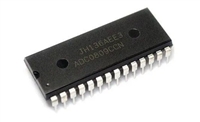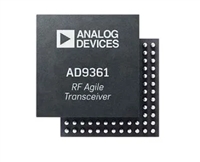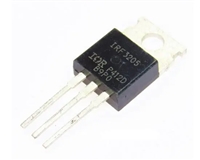LNK403-409/413-419
Diode D3 and VR1 clamp the drain voltage to a safe level due to
the effects of leakage inductance. Diode D4 is necessary to
prevent reverse current from flowing through U1 for the period
of the rectified AC input voltage that the voltage across C2 falls
to below the reflected output voltage (VOR).
40% of the mean value. For designs where lower ripple is
desirable the output capacitance value can be increased. A
small pre-load is provided by R15 which limits the output
voltage under no-load conditions.
TRIAC Phase Dimming Control Compatibility
The requirement to provide output dimming with low cost,
TRIAC-based, leading edge phase dimmers introduces a
number of trade-offs in the design.
Diode D6, C5, R7 and R8 create the primary bias supply from
an auxiliary winding on the transformer. Capacitor C4 provides
local decoupling for the BYPASS pin of U1 which is the supply
pin for the internal controller. During start-up C4 is charged to
~6 V from an internal high-voltage current source tied to the
device DRAIN pin. This allows the part to start switching at
which point the operating supply current is provided from the
bias supply via R5. Capacitor C4 also selects the output power
mode (10 mF for reduced power was selected to reduce
dissipation in U1 and increase efficiency).
Due to the much lower power consumed by LED based lighting
the current drawn by the overall lamp is below the holding
current of the TRIAC within the dimmer. This can cause
undesirable behaviors such as limited dimming range and/or
flickering as the TRIAC fires inconsistently. The relatively large
impedance the LED lamp presents to the line allows significant
ringing to occur due to the inrush current charging the input
capacitance when the TRIAC turns on. This too can cause
similar undesirable behavior as the ringing may cause the
TRIAC current to fall to zero and turn off.
Feedback
The bias winding voltage is proportional to the output voltage
(set by the turns ratio between the bias and secondary
windings). This allows the output voltage to be monitored
without secondary side feedback components. Resistor R6
converts the bias voltage into a current which is fed into the
FEEDBACK pin of U1. The internal engine within U1 combines
the FEEDBACK pin current, VOLTAGE MONITOR pin current
and drain current information to provide a constant output
current over a 1.5:1 output voltage variation (LED string voltage
variation of 25%) at a fixed line input voltage.
To overcome these issues two circuits, the Active Damper and
Passive Bleeder, are incorporated. The drawback of these
circuits is increased dissipation and therefore reduced efficiency
of the supply. For non-dimming applications these components
can simply be omitted.
The Active Damper consists of components R9, R10, R11, R12,
D1, Q1, C6, VR2, Q2 in conjunction with R13. This circuit limits
the inrush current that flows to charge C2 when the TRIAC
turns on by placing R13 in series for the first 1 ms of the TRIAC
conduction. After approximately 1 ms, Q2 turns on and shorts
R13. This keeps the power dissipation on R13 low and allows a
larger value during current limiting. Resistor R9, R10, R11 and
C6 provide the 1 ms delay after the TRIAC conducts. Transistor
Q1 discharges C6 when the TRIAC is not conducting and VR2
clamps the gate voltage of Q2 to 15 V.
To limit the output voltage at no-load an output overvoltage
protection circuit is set by D7, C12, R20, VR3, C13, Q3 and R19.
Should the output load be disconnected then the bias voltage
will increase until VR3 conducts, turning on Q3 and reducing
the current into the FEEDBACK pin. When this current drops
below 20 mA the part enters auto-restart and switching is
disabled for 1500 ms allowing time for the output and bias
voltages to fall.
Output Rectification
The Passive Bleeder circuit is comprised of C11 and R18. This
helps to keep the input current above the TRIAC holding current
while the input current corresponding to the effective driver
resistance increases during each AC half-cycle.
The transformer secondary winding is rectified by D8 and
filtered by C8 and C10. A Schottky barrier diode was selected
for efficiency and the combined value of C8 and C10 were
selected to give peak-to-peak and LED ripple current equal to
6
Rev. D 08/11
www.powerint.com






 SI2301 N沟道MOSFET:资料手册参数分析
SI2301 N沟道MOSFET:资料手册参数分析

 ADC0809逐次逼近寄存器型模数转换器:资料手册参数分析
ADC0809逐次逼近寄存器型模数转换器:资料手册参数分析

 AD9361捷变收发器:全面参数解析与关键特性概览
AD9361捷变收发器:全面参数解析与关键特性概览

 IRF3205功率MOSFET:资料手册参数分析
IRF3205功率MOSFET:资料手册参数分析
